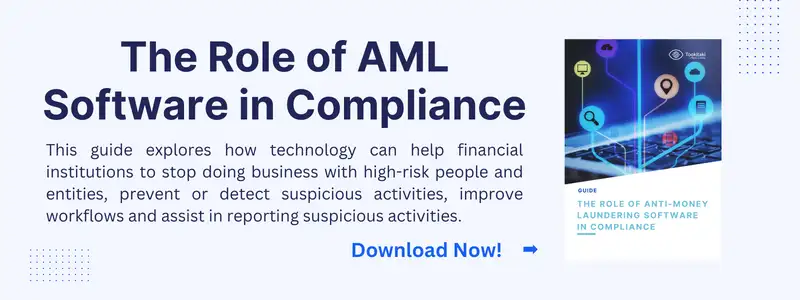Understanding the Source of Funds in Financial Transactions
In today's financial landscape, understanding the source of funds (SOF) is crucial for ensuring compliance and preventing financial crimes. Financial institutions must verify the origin of funds to comply with regulations and mitigate risks. This blog post delves into the meaning, importance, best practices, and challenges of verifying the source of funds.
What is Source of Funds?
Source of Funds Meaning
The term "source of funds" refers to the origin of the money used in a transaction. This can include earnings from employment, business revenue, investments, or other legitimate income sources.
Source of Funds Example
For instance, if someone deposits a large sum of money into their bank account, the bank needs to verify whether this money came from a legitimate source, such as a property sale, inheritance, or salary.
Here are some common sources of funds:
- Salary: Imagine you've been saving up from your job to buy a new gaming console. When you finally get it, your salary is the Source of Funds for that purchase. In the grown-up world, this could mean someone buying a house with the money they've saved from their job.
- Inheritance: Now, let's say your grandma left you some money when she passed away (may she rest in peace), and you use it to start a college fund. The inheritance is your Source of Funds for that college account.
- Business Profits: If you have a lemonade stand and make some serious cash, and then you use that money to buy a new bike, the profits from your business are your Source of Funds for the bike.
- Selling Assets: Let's say your family decides to sell your old car to buy a new one. The money you get from selling the old car becomes the Source of Funds for the new car purchase.
- Investments and Dividends: Suppose you've invested in some stocks, and you make a nice profit. If you use that money to, say, go on vacation, then the money you made from your investments is the Source of Funds for your trip.
Difference Between Source of Funds and Source of Wealth
Source of Funds (SOF) refers to the origin of the specific money involved in a transaction, such as income from employment, sales, or loans. It is focused on the immediate funds used in a particular financial activity.
Source of Wealth (SOW), on the other hand, pertains to the overall origin of an individual’s total assets, including accumulated wealth over time from various sources like investments, inheritances, or business ownership. It provides a broader view of the person's financial background.
Importance of Source of Funds Verification
Regulatory Requirements and Compliance
Verifying the source of funds is essential for financial institutions to comply with regulations such as anti-money laundering (AML) laws. Regulatory bodies like the Financial Action Task Force (FATF) mandate stringent checks to ensure that funds do not originate from illegal activities.
Financial and Reputational Risks
Failure to verify the source of funds can result in significant financial penalties and damage to an institution's reputation. Banks and other financial entities must implement robust verification processes to avoid involvement in financial crimes and maintain public trust.
Best Practices for Source of Funds Verification
Risk-Based Approach
Implementing a risk-based approach means assessing the risk level of each transaction and customer. Higher-risk transactions require more rigorous verification, ensuring that resources are allocated efficiently and effectively.
Advanced Technology Utilization
Utilizing advanced technologies such as artificial intelligence and machine learning can enhance the efficiency and accuracy of source of funds verification. These technologies can analyze large datasets quickly, identifying potential red flags.
Regular Updates and Audits
Maintaining updated records and conducting regular audits are crucial for an effective source of funds verification. This ensures that the verification processes remain robust and compliant with the latest regulations.
Common Sources of Funds
Legitimate Sources
Legitimate sources of funds include earnings from employment, business income, investment returns, loans, and inheritances. These sources are generally verifiable through official documentation such as pay slips, tax returns, and bank statements.
Illegitimate Sources
Illegitimate sources of funds might include money from illegal activities such as drug trafficking, fraud, corruption, or money laundering. These sources often lack proper documentation and can pose significant risks to financial institutions if not properly identified and reported.
Challenges in Verifying Source of Funds
Complex Transactions
Complex transactions, involving multiple parties and jurisdictions, pose significant challenges in verifying the source of funds. Tracing the origin of such funds requires comprehensive analysis and robust systems to track and verify all related transactions.
Privacy and Data Protection Concerns
Verifying the source of funds often involves handling sensitive personal data. Financial institutions must balance the need for thorough verification with strict adherence to privacy and data protection regulations, ensuring that customer information is secure.
Final Thoughts
Understanding the source of funds is crucial for financial institutions to comply with regulations and prevent financial crimes. By implementing a risk-based approach, utilizing advanced technologies, and conducting regular updates and audits, institutions can effectively verify the source of funds. Additionally, distinguishing between legitimate and illegitimate sources, and understanding the difference between source of funds and source of wealth, are essential for comprehensive financial analysis.
Tookitaki offers advanced AML solutions that streamline the source of funds verification process. Our innovative technology ensures compliance and reduces risks associated with financial transactions. Talk to our experts to explore how Tookitaki's AML solutions can enhance your institution's financial security.
Anti-Financial Crime Compliance with Tookitaki?





